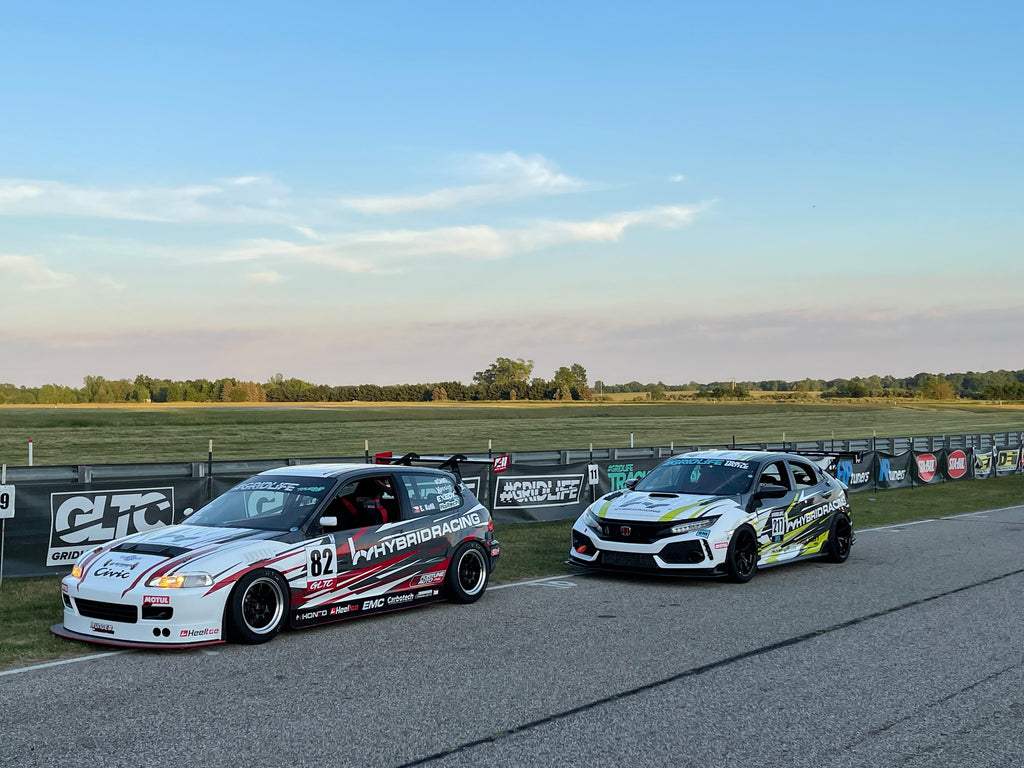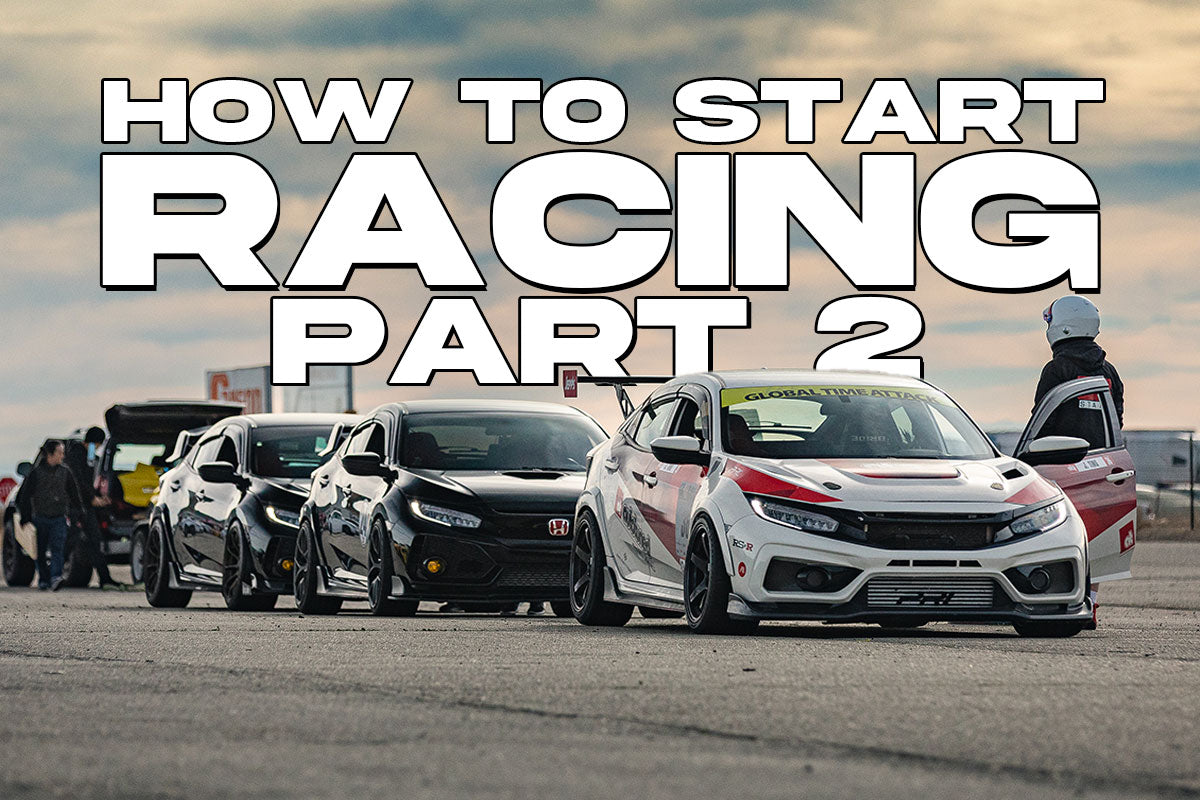Written by Eric Kutil
In my previous blog, I talked about how to get started in racing and it was mostly focused on autocross. Today, I want to bring you part two, for those who are more experienced and want to progress more towards on track circuit racing.The simple answer to that are track days and HPDE’s! These events are the next step for those looking to expand their skills and race on an actual race track at significantly higher speeds.

Track days are held on pretty much every track in North America throughout the entire year depending on where you live. If you have a local racetrack near you, chances are they host numerous track days on the weekends and sometimes even during the week! Depending on the organization running the events and driver count, these track days usually offer hours and hours of seat time. However, it comes at a price. While autocross has minimal seat time for super cheap, track days are on the opposite side of the spectrum. We can get into cost details later.
For those who have never done a track day, how do you get started?
Well, that’s where HPDE’s come in. Also known as High Performance Driving Education, these are schools that are held during most track days to help get varying levels of skilled drivers more experienced on track. That includes helping brand new drivers at their first event get started. Training intermediate drivers with a few events under their belt to get them more comfortable on track, and sometimes offer coaching to advanced drivers. These schools have numerous trained instructors that are highly experienced drivers and sometimes even skilled racers which are assigned to each student and are there to help you reach your goals. The school starts with a class that covers every aspect of driving on a track from the basics of track etiquette, flags, safety procedures, car control and more. Track days are intense and very intimidating, especially to newcomers so the goal of these schools are mainly to calm the nerves, make sure stress is reduced, walk them through the event and help them learn high performance driving in a comfortable environment.

So as a novice, your first session is usually a lead/follow. You’ll follow an instructor on the track to learn the lines, brake zones and become familiar with the track. These lead/follow drills are pretty slow, about half pace. The next few sessions are where the pace begins to build. Depending on the organization, you may have an instructor ride shotgun and help coach you during the session. Not all organizations allow instructor ride alongs due to safety concerns so the alternative option is out of seat instruction. That usually means more lead/follow drills at a higher pace with instructors placed around the track which observe and document notes on each novice. After each session, these instructors are also able to give you very detailed feedback and give you tips and areas to improve and focus on. As you progress as a driver within these HPDE’s, if instructors feel you’re ready for the next step, they will promote you to intermediate and then eventually advanced. These higher levels offer more perks and independence on track at a significantly faster pace. One thing I will say about HPDE’s is take them seriously and try to soak up as much knowledge as possible. These instructors have years and years of experience and they start you off with success. They help reduce bad habits on track and most importantly, prevent you from wrecking your car. It has to be said, track days are significantly more dangerous. You’re on a racetrack going at speeds over 100 mph and usually on or beyond the limit. One small mistake can lead to a pretty nasty wreck which can total your car or worse, cause injury. This is why I want to stress the importance of HPDE and progressing through the school at a reasonable pace. Don’t try to rush it! Some of the best HPDE schools that I highly recommend are Auto Interest, Gridlife, NASA, and within SCCA. If these organizations are not in your area, search for track days nearby and inquire about HPDE schools.

One last comment,
Let's talk more about track days and what to expect as a more experienced driver. This is the best environment to really push the limits of your car and skills as a driver. Like I said, they offer a ton of track time. A track day is usually four, six, maybe even more sessions per day that are about 15 to 20 minutes long. That’s hours of track time and usually more than enough for most drivers. Unfortunately, you’re paying for all that track time, and it’s not cheap . You have to remember, you’re renting a track, the entire track staff, all the corner workers for the entire day, sometimes weekends. Expect to pay around $300 to $500 per day and almost double for a full weekend. Those prices can go even higher depending on the track as well. Prestigious tracks can easily cost over a grand. My recommendation is to start off with more grassroots style tracks like Gingerman, Putnam Park, the FIRM, NOLA Motorsports, etc.These tracks usually host cheaper track days and are generally much safer to push your limits of driving. Gingerman for example is perfect due to the massive grass run offs and minimal objects to hit. Once you gain a decent amount of experience, that’s when you can expand to more challenging tracks.

Not only are the events more expensive but so is the car prep. You really want to make sure you have a car that’s reliable and won't break down on you. The last thing you want to do is pay for an event and break down in the first session. You also want to make sure you have good brakes, this is critical. Brake fade at track days is almost guaranteed with any stock vehicle, even sports cars. Mustangs, Camaros, Civic Type Rs, etc, will all have brake fade if you continue to lap the entire session. It is recommended at a minimum to replace the OEM brake fluid with high performance brake fluid that can tolerate the heat better and not boil. If you have the budget, pads and higher grade rotors are ideal. The next item is good tires. You’ll want some decent 200tw street tires to have the most amount of fun on track. Modern high performance street tires are incredible and can last a full season or more of tracking.

So to summarize...
- Search local tracks or contact organizations that host events (motorsportsreg.com)
- Join a HPDE Facebook group
- Ask about instructor help
- Prepare your car - check tires, brakes, etc
- Prepare equipment - helmet, gloves, pants, shoes
- Arrive early!
Things you will need:
- Car
- Extra Gas
- Tires, pressure gauges, tools for lugs
- Brake pad and fluid check
- Helmet and bag
- Chair, ice chest, drinks, snacks

Stay tuned for the next part where I get into more detail on reaching your full potential at track days and what modifications to prioritize!
-Eric
